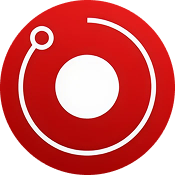In the realm of blockchain innovation, two sectors stand out for their disruptive potential: decentralized GPU rendering platforms and decentralized exchanges (DEXs). While the former revolutionizes visual content creation by harnessing idle GPU power worldwide, the latter transforms how digital assets are traded across chains with high efficiency and liquidity. Both domains leverage blockchain technology to decentralize traditionally centralized processes, yet their core functionalities and user bases differ vastly. This blog aims to dissect the technical architectures, market positions, and use cases of Render and Raydium, providing crypto enthusiasts with a comprehensive understanding to inform their investment and development strategies.
Short on time? Jump to Render vs Raydium Comparison
Understanding Render and Raydium ?
Render Network is a decentralized GPU rendering platform that utilizes idle GPU resources from around the globe to perform complex rendering tasks more cost-effectively than traditional centralized farms. It employs blockchain technology to ensure transparency and security in task distribution and payment. Render Token (RNDR), the native utility token, facilitates transactions within this ecosystem, enabling artists and studios to access scalable rendering services without hefty infrastructure costs.
Raydium, on the other hand, is a Solana-based decentralized exchange (DEX) that integrates an Automated Market Maker (AMM) with liquidity pools and cross-chain functionalities. It has rapidly gained prominence by providing high-speed, low-cost trading solutions, leveraging Solana’s high throughput blockchain. Raydium's innovative features, including liquidity provision mechanisms and cross-chain support, position it as a key player in the decentralized finance (DeFi) space.
Both platforms exemplify blockchain’s capacity to decentralize and democratize processes—Render in the visual content creation industry, and Raydium in the liquidity and trading ecosystem. Despite their differing sectors, they share common goals of reducing costs, increasing efficiency, and broadening access for users worldwide.
Understanding their underlying architectures, market dynamics, and recent innovations offers valuable insights into how blockchain technology adapts to diverse industry needs and user demands. This comparison will highlight their key features, market positions, and who benefits most from their services.
Key Differences Between Render and Raydium
Core Functionality
- Render: Render Network primarily focuses on decentralized GPU rendering, enabling artists and studios to leverage global idle GPU resources for high-quality visual outputs. It transforms traditional rendering farms into open, scalable networks that reduce costs and time for content creation.
- Raydium: Raydium operates as a decentralized exchange that facilitates rapid token swaps and liquidity provision on Solana. Its core function revolves around enabling seamless, low-cost trading across a fast blockchain infrastructure, with added features like cross-chain transfers and liquidity incentives.
Underlying Technology
- Render: Render leverages blockchain to coordinate a distributed network of GPU nodes, employing smart contracts for task management and payment. Its architecture emphasizes security, decentralization, and efficient task allocation in rendering workflows.
- Raydium: Raydium integrates AMM algorithms, liquidity pools, and cross-chain protocols built atop Solana's high-performance blockchain. Its technology supports high throughput, low latency, and scalable trading functionalities, making it suitable for high-frequency DeFi activities.
Market Adoption & Metrics
- Render: Render boasts over 10,000 node operators and more than 5,000 active users, including major studios, indicating steady adoption in entertainment, gaming, and VR industries. Its recent partnerships aim to expand real-time rendering applications.
- Raydium: Raydium has experienced exponential growth, with daily trading volumes surpassing $785 million in Q3 2024 and leading Solana’s DEX market share. Its user base is driven by memecoin trading, cross-chain transfers, and liquidity farming, with rising TVL and trading activity.
Application Scope
- Render: Render is used in film production, gaming, virtual reality, architectural visualization, and scientific simulations—industries where high-quality, cost-effective rendering is crucial. Its decentralized approach allows for scalable, sustainable content creation.
- Raydium: Raydium serves DeFi users, liquidity providers, and traders on Solana, supporting token swaps, liquidity farming, and cross-chain asset transfers. Its ecosystem caters to high-frequency trading, memecoin markets, and cross-chain interoperability.
Recent Innovations
- Render: Render has recently integrated with major 3D software suites and partnered with VR companies to enable real-time rendering, enhancing usability and expanding its market scope.
- Raydium: Raydium launched V3 with improved pools, a new UI, and cross-chain support via Wormhole and CCTP, boosting user experience and interoperability. Its Burn and Earn feature also incentivizes liquidity provision and community trust.
Render vs Raydium Comparison
| Feature | ✅ Render | ✅ Raydium |
|---|---|---|
| Main Function | Decentralized GPU rendering for visual content | Decentralized crypto asset trading and liquidity |
| Technology Base | Blockchain + distributed GPU network | Solana blockchain + AMM + cross-chain protocols |
| Market Adoption | 10,000+ node operators, 5,000+ users | Billions in daily trading volume, leading Solana DEX |
| Use Cases | Film, gaming, VR, scientific visualization | Token swaps, liquidity pools, memecoin trading |
| Recent Developments | Partnerships with VR firms, software integrations | V3 launch, cross-chain features, incentivization |
Ideal For
Choose Render: Artists, studios, and content creators seeking scalable rendering solutions.
Choose Raydium: DeFi traders, liquidity providers, and cross-chain asset users seeking high-speed, low-cost trading.
Conclusion: Render vs Raydium
Render and Raydium exemplify blockchain’s versatility in transforming distinct industries—visual content creation and decentralized finance. Render’s decentralized GPU network offers a cost-effective alternative to traditional rendering farms, empowering artists and studios with scalable, secure solutions. Conversely, Raydium leverages Solana’s high throughput to facilitate rapid, low-cost trading, capturing a significant share of the DeFi ecosystem with innovative features like cross-chain support and liquidity incentives.
Choosing between them depends on user needs: content creators looking for scalable rendering should consider Render’s decentralized infrastructure, while DeFi enthusiasts seeking efficient trading and liquidity services will find Raydium better suited. Both platforms highlight blockchain’s capacity to revolutionize traditional processes by decentralizing power and expanding access, albeit in very different spheres of the digital economy.





